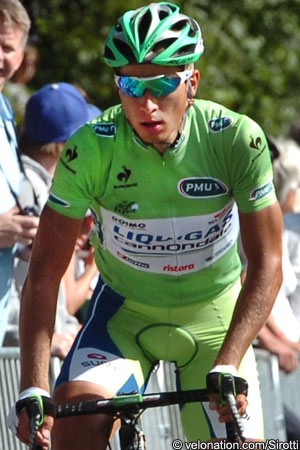“There is a lot more potential there, by the look of things”
 Winner of three stage victories in the Tour de France and the second youngest victor of the green jersey ever, Peter Sagan had a superb debut in this year’s race.
Winner of three stage victories in the Tour de France and the second youngest victor of the green jersey ever, Peter Sagan had a superb debut in this year’s race.
His achievements have impressed many, not least former world number one Sean Kelly. He recognises the scale of what the Slovakian has done, and believes that the Liquigas-Cannondale rider could even go on to become someone who can target the overall classification in three week races.
“It is very possible,” said Kelly, when asked by VeloNation if Sagan could be a future Grand Tour contender. “He can clearly sprint, but if you also consider how he performed on some of the hilly stages in the Tour, he’s got a lot of ability.”
The clearest indication of versatility came on the fourteenth stage of the Tour to Foix, when Sagan got clear in a break which included a number of other strong riders. It was initially presumed he was only going for points in the intermediate sprint for the green jersey competition, particularly with two first category ascents in the second half of the stage
When Sagan made it over the first of those, the others in the break became concerned that he might be able to tough it out until the finish, then use his sprint to win the stage. In a bid to prevent this happening, Luis Leon Sanchez (Rabobank) pushed the pace on the category one Mur de Péguère, going ahead with Philippe Gilbert (BMC Racing Team), Sandy Casar (FDJ-Big Mat) and Gorka Izagirre (Euskaltel Euskadi).
However, to the surprise of many, Sagan clawed his way back on the climb and caught them before the top. This made a big impression on those in the break, and also on Kelly himself.
“I’d already been surprised by how he had performed in the Tour,” the Irishman stated. “I was expecting him to win stages in Belgium, in Seraing, on some of the uphill finishes where it kicks up in the last two or three kilometres. But winning a flat stage there against Greipel and the other pure sprinters was impressive.
“Then he went on to ride so well on the day he was in the break. The other guys were trying to blow him out on the climb; Luis Leon Sanchez tried to distance him, but it didn’t happen. Sagan got into his pace and worked away. We could see then that he was really strong, because he came right back at them. That was impressive.”
The rider is still just 22 years of age and should naturally grow stronger in the years to come. However Kelly gives another reason why there could be considerable improvement.
 “There is a lot more potential there, by the look of things, in term of the way he can climb. He goes well, yet he can take off another three or four kilos in weight. When he does that, it is going to make such a big difference in the big mountains.
“There is a lot more potential there, by the look of things, in term of the way he can climb. He goes well, yet he can take off another three or four kilos in weight. When he does that, it is going to make such a big difference in the big mountains.
“If you are three kilos over, it will really catch you on the long climbs. You can climb for five or six kilometres, but when it is fifteen or eighteen kilometres, that is where it really comes back at you.
“What he needs to do is look after himself better. He needs to be put in the Wiggins diet and, if he does that, he will be consistently better on the big climbs.”
Kelly started his career as a sprinter, winning his first Tour de France stage in 1978 at 22 years, the same age as Sagan this year. He went on to take two stages in the 1979 Vuelta a España, then two in the 1980 Tour de France. However in time he showed he could do more than that, winning the first of seven Paris-Nice titles in 1982 and the first of several Classics, the Giro di Lombardia, in 1983.
He also evolved into a Grand Tour contender, placing fifth and fourth in the 1984 and 1985 Tours de France, then winning the Vuelta a España in 1988.
Asked if he saw parallels between himself and Sagan, who took last year’s Tour of Poland, he agreed that the comparison is valid. “Yeah, there would be a lot of similarities,” he answered. “I certainly think that potential is there. It just has to be worked on. You can’t find anything wrong with his sprinting ability. As regards his climbing, he has promise, and you can see very clearly what needs to be done, how he can improve. He does need to try to improve in the time trialing, but that too could come.
“At 22, he has two or three years to start working and to get to that level.”